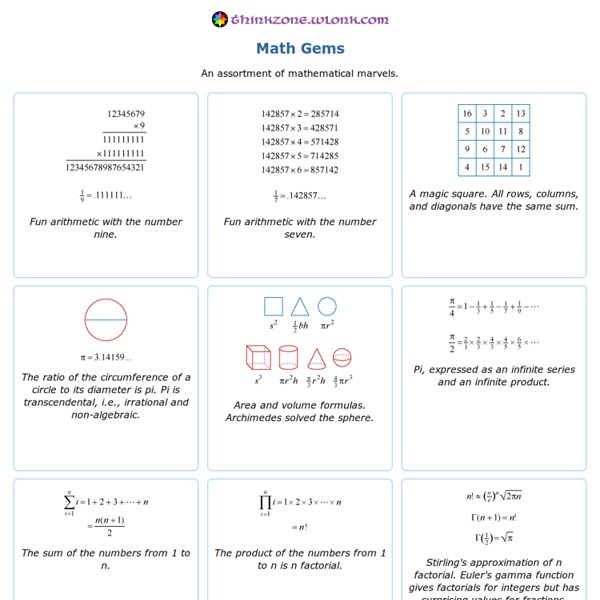



Exploring Math With Technology Kidspiration Activities - Math Standard: Money (K) 6A.3.a; (Gr. 1, 2) 6A.3.b; Fractions (Gr. 1, 2) 6A.2.a See what's happening in the computer lab Examples of Math (and Language Arts) activities created by primary grade students. Math Standard: 1B.1.a - Kidspiration, KidPix, Windows Paint, Graph Club, MS Word, and Excel Miss Damush's second grade students made graphs for an online project- "Graph Goodies" Mrs. Hall's Kindergarten students use Graph Club. Ms. Page numbers for BCRs refer to pages in the handouts for this session. Standard 1.0 - Knowledge of Algebra, Patterns, or Functions Pattern Blocks - Math Standard: (Gr. Standard 3.0 - Knowledge of Measurement Teaching Time - Click on "Whole Class Clock" and "Games" for each year. Standard 4.0 - Knowledge of Statistics Interpreting Data - Math Standard: (Gr. 1) 4A.1.b Sample BCR (p. 15) Online Graph Maker - Math Standard: (Gr. 1, 2) 4A.1.d Sample BCR (p. 16) Standard 6.0 - Knowledge of Number Relationships or Computation Mrs.
Banach-Tarski Paradox -- Math Fun Facts Did you know that it is possible to cut a solid ball into 5 pieces, and by re-assembling them, using rigid motions only, form TWO solid balls, EACH THE SAME SIZE AND SHAPE as the original? This theorem is known as the Banach-Tarski paradox. So why can't you do this in real life, say, with a block of gold? If matter were infinitely divisible (which it is not) then it might be possible. But the pieces involved are so "jagged" and exotic that they do not have a well-defined notion of volume, or measure, associated to them. In fact, what the Banach-Tarski paradox shows is that no matter how you try to define "volume" so that it corresponds with our usual definition for nice sets, there will always be "bad" sets for which it is impossible to define a "volume"! Presentation Suggestions: Students will find this Fun Fact hard to believe. The Math Behind the Fact: First of all, if we didn't restrict ourselves to rigid motions, this paradox would be more believable.
Addition, Subtraction, Multiplication and Division Teaching Ideas All Four Operations: Maths Karate - A wonderful way of reinforcing understanding of addition, subtraction, multiplication and division vocabulary. Inverse Operations Triangles - Printable triangles which can be used when showing children how operations are linked to their inverse. Contributed by Scott Evans. Multiplication and Division: Multiplication and Division by 10, 100 and 1000 - A grid which can be used to support multiplication and division by 10, 100 and 1000. Maths Operations Resources:
Khan Academy Online Math Help & Learning Resources Integral Table Mixing in Math Printer-Friendly Copies of MiM Activities All of the current activities are available as downloadable PDFs. Download and print as many of them as you like. Don't have Acrobat Reader? Download it here! Adobe Acrobat software Click here to browse the activities as web pages. MiM News MiM Activity Book, Card, Dice, and Board Games in Spanish! MiM Activity Book reviewed! Lucky Tens and other dice games awarded 2013 Product of the Year by Creative Child Magazine Coming in 2014—a full line of Mixing in Math Preschool Products © 2014, TERC, Inc.
Take It to the Limit In middle school my friends and I enjoyed chewing on the classic conundrums. What happens when an irresistible force meets an immovable object? Easy — they both explode. Philosophy’s trivial when you’re 13. But one puzzle bothered us: if you keep moving halfway to the wall, will you ever get there? Questions like this have always caused headaches. But Archimedes, the greatest mathematician of antiquity, realized the power of the infinite. In the coming weeks we’ll delve into the great ideas at the heart of calculus. If you’re a careful thinker, you might be worried about something already. Imagine using a photocopier to reduce an image of a circle by, say, 50 percent. Of course, this doesn’t tell us how big pi is. Before turning to Archimedes’s brilliant solution, we should mention one other place where pi appears in connection with circles. Here A is the area, π is the Greek letter pi, and r is the radius of the circle, defined as half the diameter. Yes, it is. More in This Series
Prehistoric Calculus: Discovering Pi Pi is mysterious. Sure, you “know” it’s about 3.14159 because you read it in some book. But what if you had no textbooks, no computers, and no calculus (egads!) — just your brain and a piece of paper. Could you find pi? Archimedes found pi to 99.9% accuracy 2000 years ago — without decimal points or even the number zero! How do we find pi? Pi is the circumference of a circle with diameter 1. Say pi = 3 and call it a day.Draw a circle with a steady hand, wrap it with string, and measure with your finest ruler.Use door #3 What’s behind door #3? How did Archimedes do it? Archimedes didn’t know the circumference of a circle. We don’t know a circle’s circumference, but for kicks let’s draw it between two squares: Neat — it’s like a racetrack with inner and outer edges. And since squares are, well, square, we find their perimeters easily: Outside square (easy): side = 1, therefore perimeter = 4Inside square (not so easy): The diagonal is 1 (top-to-bottom). Squares drool, octagons rule Cool!
Free Calculus The Calculus Here is a free online calculus course. This is essentially an ordinary text, but you can read it online. There are lots of exercises and examples. This text is somewhat unusual for two reasons. The text is rigorous. Both points are no doubt controversial, but conceptually the approach gives a kind of clean synergy which generates important examples and unifies calculus to a great extent. Unfortunately, there are no doubt uncorrected typographical errors and logical errors. This text © 1993, 2001 Copyright William V. Table of Contents